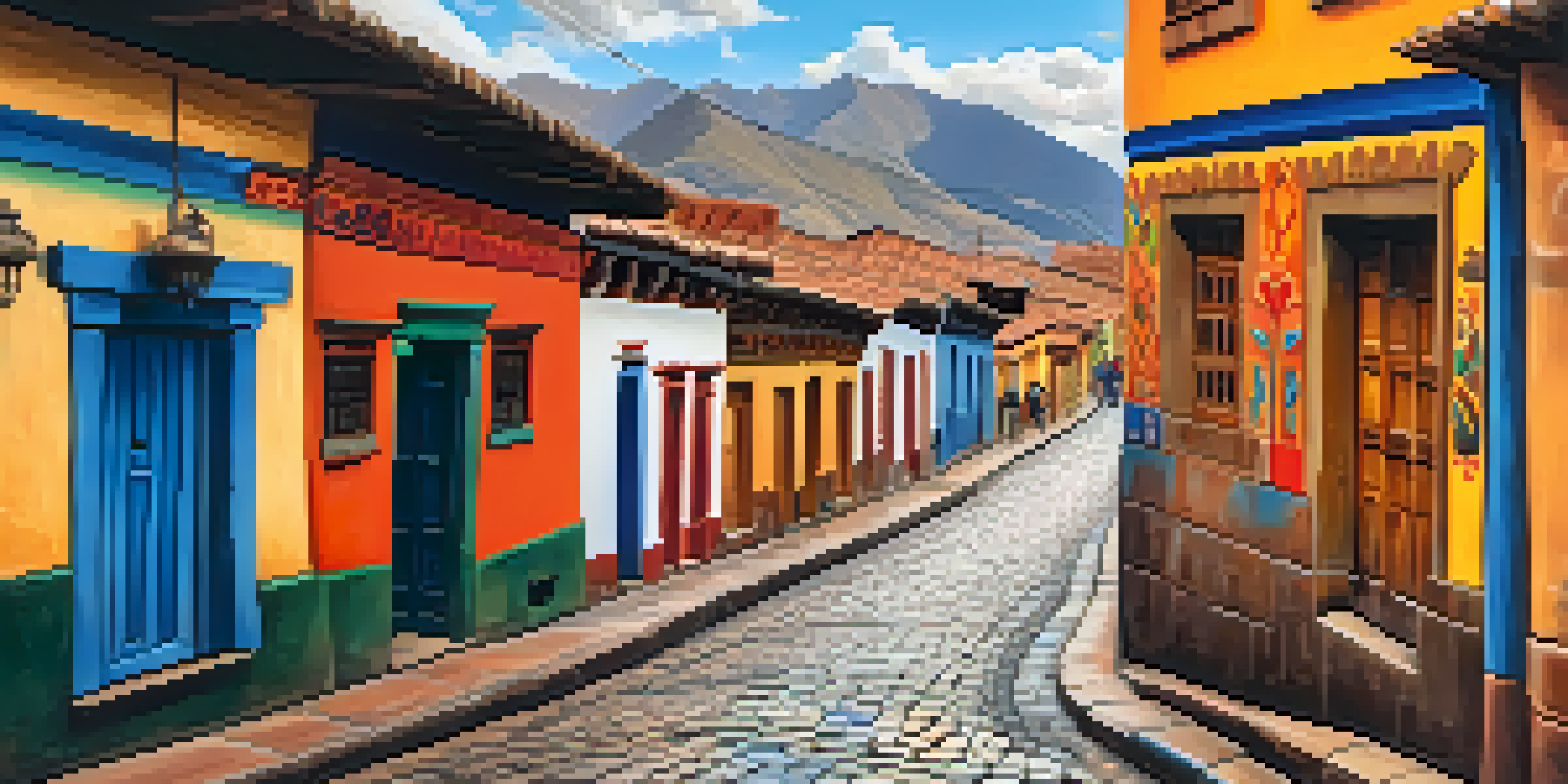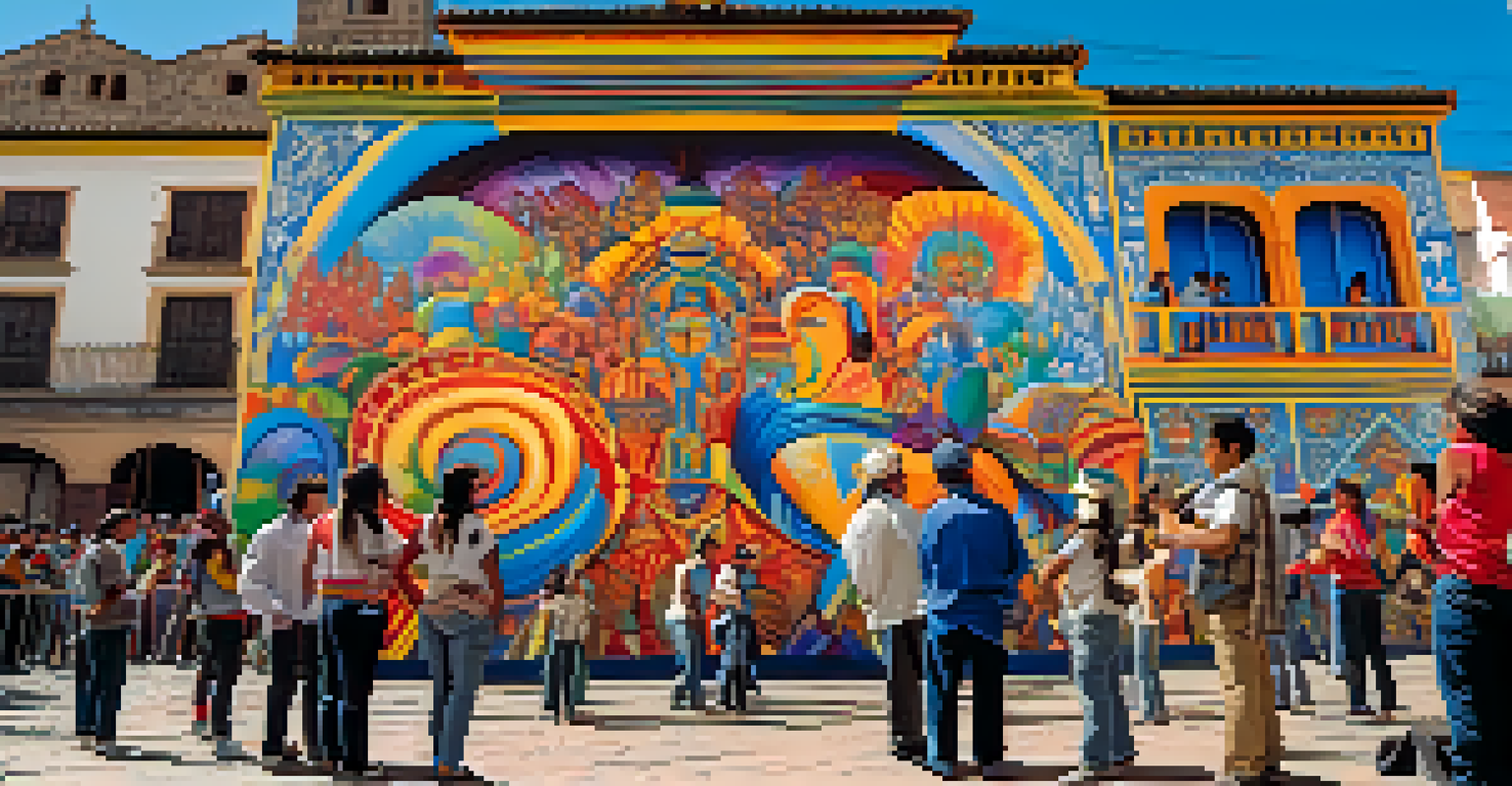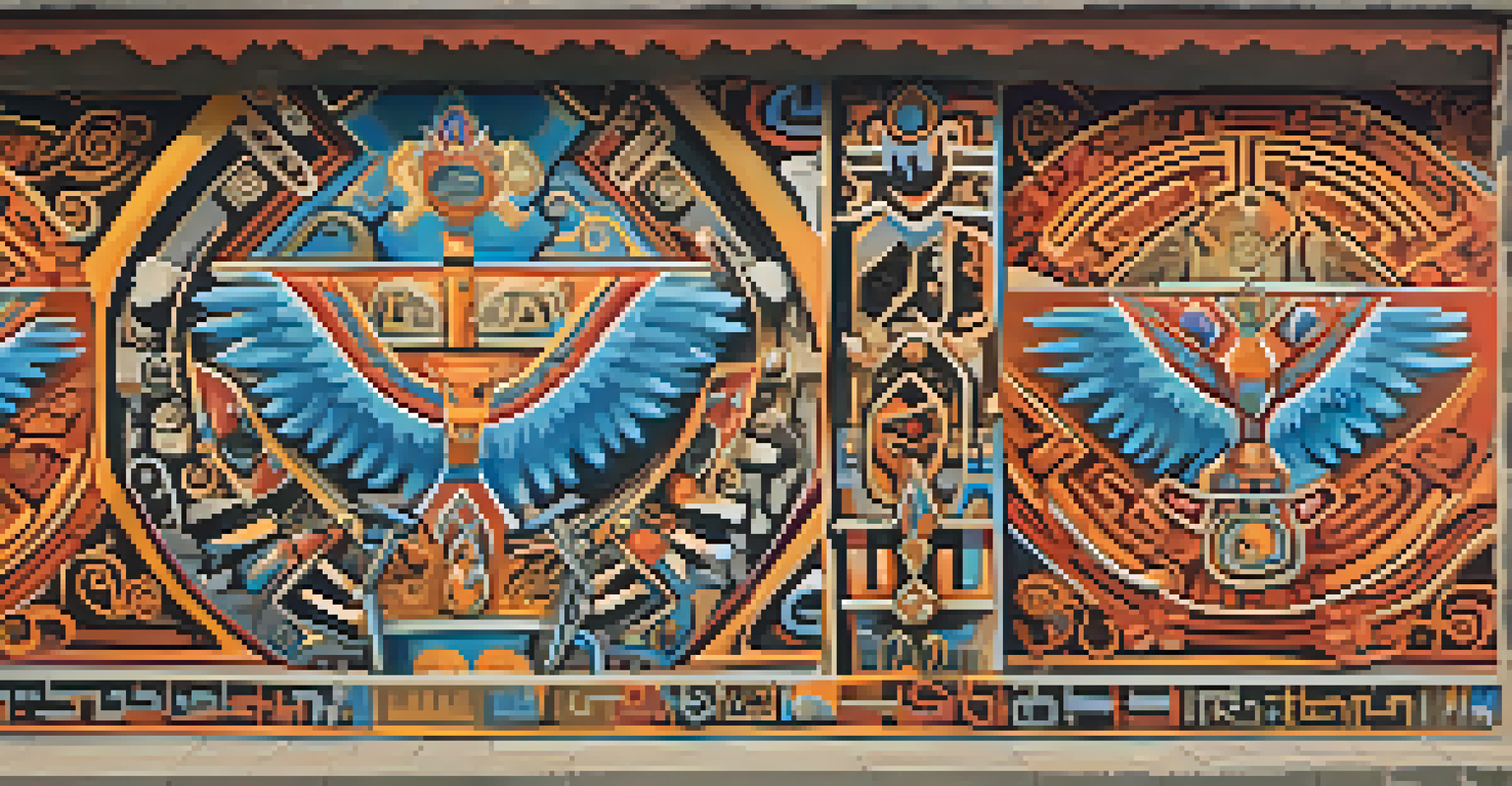Cusco's Street Art: A Colorful Journey Through Urban Life

The Vibrant Canvas of Cusco's Streets
Cusco, once the heart of the Inca Empire, has transformed into a canvas of vibrant street art. Every wall, alley, and corner tells a story, reflecting the essence of urban life in this historical city. From intricate murals to simple graffiti, these artworks breathe life into the city’s landscape, inviting locals and tourists alike to explore their meanings.
Art is not what you see, but what you make others see.
Walking through the streets of Cusco, you can’t help but notice the bursts of color that adorn the buildings. These artworks often blend traditional Incan motifs with contemporary themes, creating a unique juxtaposition that captivates the eye. It’s as if each piece is a bridge connecting the rich history of the city with its modern-day vibrancy.
Street art in Cusco serves as both an expression of creativity and a platform for social commentary. Many artists use their work to address pressing issues such as inequality, environmental concerns, and cultural identity, making the art not just visually appealing but also thought-provoking.
The Artists Behind the Murals
The street art scene in Cusco is fueled by an eclectic mix of local and international artists. Many of these creators are passionate about sharing their cultural heritage while simultaneously pushing the boundaries of artistic expression. Each artist brings a unique perspective, influenced by their experiences and the rich cultural tapestry of Peru.

For instance, you might encounter the work of a local artist who incorporates traditional Andean symbols into modern designs, offering a fresh take on heritage. In contrast, international artists often infuse their backgrounds into the local scene, resulting in a delightful blend of styles that can be seen throughout the city.
Street Art Reflects Cultural Identity
Cusco's street art serves as a vibrant expression of the city's cultural heritage and social issues, blending traditional motifs with contemporary themes.
These artists often collaborate on large-scale projects, transforming neglected areas into vibrant public galleries. This spirit of collaboration not only enhances the visual appeal of Cusco but fosters a sense of community among the artists and residents alike, encouraging dialogue and connection through art.
Cultural Significance of Street Art
Street art in Cusco is more than just decoration; it's a vibrant expression of cultural identity and social issues. Many murals depict scenes from Incan mythology or celebrate indigenous heritage, reminding viewers of the city’s roots. This connection to the past is vital in a world that often overlooks history in favor of modernity.
Every artist dips his brush in his own soul, and paints his own nature into his pictures.
Additionally, these artworks often serve as a form of protest or commentary on current societal challenges. Artists use their platforms to draw attention to issues like poverty, environmental destruction, and cultural loss. In this way, street art becomes a voice for the voiceless, urging the community to reflect on its values and priorities.
Through vibrant colors and striking imagery, these murals foster a sense of pride among locals. They become symbols of resilience, reminding everyone that art can inspire change and encourage dialogue about important topics within the community.
Notable Locations for Street Art
If you're planning a visit to Cusco, certain areas are must-see destinations for street art enthusiasts. The San Blas neighborhood, known for its bohemian vibe, is a hotspot where many local artists showcase their talents. Here, narrow cobblestone streets are adorned with colorful murals that reflect the spirit of the community.
Another popular spot is the area around Avenida del Sol, where larger-than-life murals capture the attention of passersby. These artworks often depict scenes from daily life, making them relatable to both locals and tourists. It’s a wonderful place to take in the creativity that flows through the city.
Artists Foster Community Connections
Local and international artists collaborate on projects that not only beautify neglected areas but also create a sense of community and dialogue.
Don’t forget to explore the alleyways and side streets as well; some of the most hidden gems can be found off the beaten path. These unexpected discoveries often lead to conversations with local residents, who are eager to share their insights about the art and the stories behind it.
The Role of Festivals in Promoting Street Art
Festivals play a crucial role in promoting street art in Cusco, bringing together artists and art lovers from all walks of life. Events like the Cusco Street Art Festival highlight local talent and encourage collaboration between artists. These gatherings transform the city into a vibrant showcase of creativity, with live painting sessions and workshops.
During these festivals, the streets come alive with music, dance, and, of course, art. Visitors can witness the creative process firsthand as artists work on large murals, often with the community's involvement. This collaborative spirit not only enhances the artistic experience but also creates lasting connections among participants.
The festivals also provide a platform for important conversations around art and its impact on society. Discussions, panels, and exhibitions help raise awareness about the significance of street art, fostering a greater appreciation for its role in cultural expression and social change.
Street Art and Community Engagement
Community engagement is at the heart of Cusco's street art scene, as many artists actively involve residents in their projects. This collaboration fosters a sense of ownership and pride among locals, who see their stories and experiences reflected in the art. Through workshops and community murals, artists create spaces for dialogue and connection.
For example, an artist might host a workshop to teach kids about painting, allowing them to express their creativity while learning about their cultural heritage. This not only empowers the youth but also instills a sense of responsibility to uphold and celebrate their traditions.
Festivals Promote Artistic Expression
Street art festivals in Cusco bring together artists and the community, highlighting the significance of art in cultural expression and social change.
Such initiatives also help bridge the gap between different generations, sparking conversations about the importance of preserving cultural identity. As community members gather to create and celebrate art, they reinforce their bonds and create a vibrant, inclusive atmosphere that enriches the city.
The Future of Street Art in Cusco
As Cusco continues to evolve, so too does its street art scene. With an influx of tourists and a growing appreciation for urban art, artists are finding new opportunities to showcase their work. This dynamic environment fosters innovation and experimentation, leading to fresh ideas and techniques that keep the art form alive.
Moreover, as awareness of social issues grows, artists are increasingly using their platforms to advocate for change. The future of street art in Cusco is not just about aesthetics; it’s about sparking conversations and inspiring action within the community.

As the city embraces its artistic spirit, it also recognizes the importance of preserving its cultural heritage. This balance will surely shape the future of Cusco's street art, ensuring that it remains a vibrant reflection of the city’s identity for generations to come.